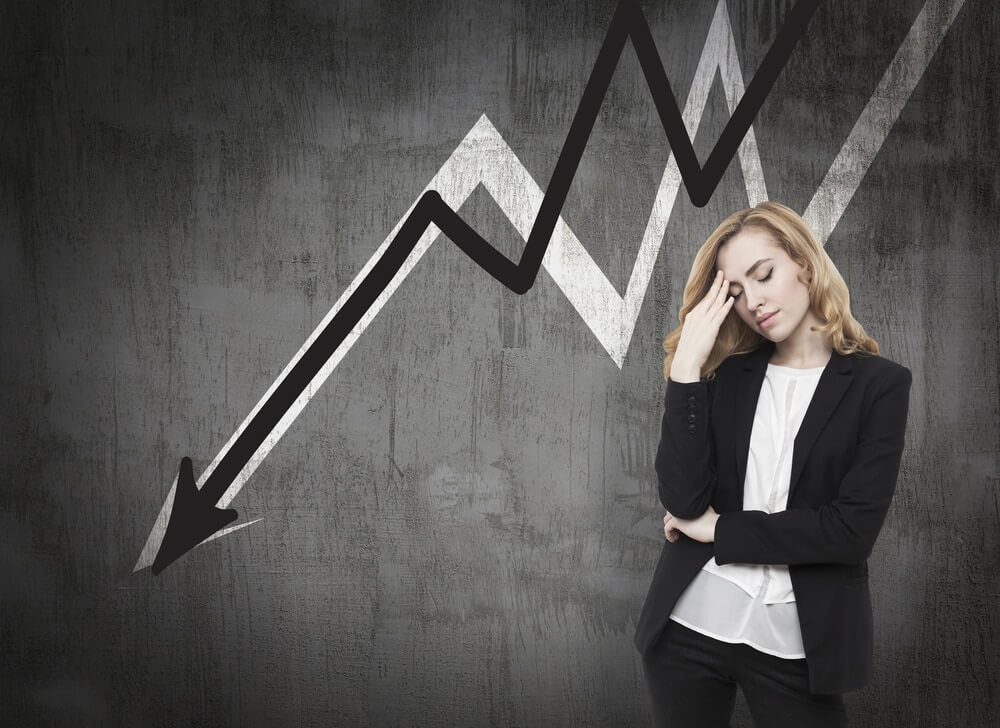
Negative PE Ratio and What it Means for Stocks?
The PE is a stock market ratio corresponding to the ratio between the market value of a company and its profits. Used by both the novice shareholder and the seasoned trader, the PE or pricing earnings ratio is the public companies’ most common valuation ratio. It can be calculated based on data for the last financial year of a company, on quarterly data (sliding PE), or even on forecast data (projected PE). The PE is intended to assess the high cost of a share.
What is the Price to earnings ratio – (PE) negative ratio explained
Although simple to calculate, the PE is however quite difficult to interpret. It can be meaningful in some cases and completely meaningless in others. As a result, investors can sometimes misuse this indicator.
The acronym PE stands for the ratio between its share price and earnings per share (EPS). As the name suggests, PE is calculated by dividing the current share price by the company’s earnings per share:
PE = Share price / Earnings per share (EPS)
PE is often calculated using EPS for the past four quarters. It is also called the sliding PE. It also happens to calculate the PE on the basis of the expected profits for the next four quarters. This is then a projected PE. While there isn’t a huge difference between the two, it’s important to keep in mind that the former is based on historical data. Meanwhile, the latter is calculated from analyst estimates, inherently imperfect.
With their negative EPS, loss-making companies pose a problem in calculating the PE. Opinions differ on this question. Some say PE is negative, others say it is zero, and most say it just doesn’t exist.
Historically, the average market PE has been between 15 and 25, and it fluctuates with economic conditions. It can also vary greatly from one industry to another.
PEG ratio (or the price/earnings to growth) is a stock’s (P/E) ratio divided by the growth rate of earnings for a specified time. It’s used to determine a stock’s real value while also taking into account the company’s expected earnings growth. Its aim is to provide a complete picture than the more usual P/E ratio.
What does a negative PE ratio mean?
Can PE ratio be negative? What does a negative PE ratio mean? While a negative PE ratio demonstrates a company is losing money, this is not always an indication of impending bankruptcy. A company might have a negative PE ratio and yet be on the way to growth. If a company changes its policies, that might change the PE ratio. Also, changes in amortization policies in a specific year might temporarily cause the company to report a negative PE ratio.
The stock price itself can never be negative. The only mathematical way the PE ratio can turn out to be negative is a negative EPS number.
It entails that the stocks had negative net income during 12 months or four past fiscal quarters. It doesn’t mean all the quarters were negative, just that the total amount was lower than zero.
In some industries and sectors, it’s not uncommon for a company to have a negative PE ratio when they are just about to launch. Take, for example, the pharmaceutical companies that have to invest some upfront money into research. They may report a yearly loss before making some profit.
Tesla example – Why is Tesla’s PE ratio negative?
That is why the Tesla PE ratio can turn out to be negative, to take, for example, one of the most illustrative examples. As a technology company, it posted a loss initially. Yet the stock price rose significantly. This was due to positive earnings growth over the years. When it comes to financial metrics, it’s crucial to compare the PE ratio with the ratios of other companies in the same sector or industry.
Tesla currently has negative PE. It also has a negative operating cash flow. It means that the company needs to receive more funding to expand and operate in this state. The “E” in the P/E formula is negative.
But an investor should become upset if a company constantly shows a negative PE ratio for a long haul, for instance, four years in a row. If that is the case, the company is not in a financially good state.

How to interpret PE?
When it is between 10 and 17, it is generally considered to be priced right. Below 10 signals the stock’s undervaluation or assumes future deficits for the company. Above 17, it tends to emphasize the overvaluation of the stock or to signal future profits.
When it is above 25, it is often synonymous with a speculative bubble or high expected profits. PE is very useful and relevant for comparing two companies or a list of stocks of similar size and operating in the same sector of activity. On the other hand, it will be difficult to interpret the PE for year N of a company if it was in a loss in year N-1.
In general, valuation ratios may vary depending on external events such as the state of the market, the company’s image in public opinion, news in its sector or even fluctuations.
The calculation of a financial ratio proves to be reliable above all on the basis of the accounts (turnover, operating profit, net profit, etc.) for the current financial year. But these tools are not intended to quantify future growth. The valuation ratios are therefore not sufficient to determine the price of a share but allow to enrich the reflection within the framework of an investment decision.
How to use the PE – Negative PE ratio explained
In theory, the PE of a value tells us how much investors are willing to pay for a dollar in profit. This is why the PE is also called the “multiple” of a share. In other words, a PE of 20 tells us that investors are willing to shell out $ 20 for every $ 1 in profit the business generates.
However, this is a somewhat simplistic conception of PE, as it does not take into consideration the future growth prospects of the company.
Profit growth
Although the calculation of EPS is based on earnings for the past four quarters, PE is more than a measure of the company’s past performance. The PE also considers the growth forecasts that the market makes for the company.
Remember, the current stock price is already incorporating investors’ forecasts. As a result, it is more correct to interpret PE as a measure of investor optimism about the company’s growth prospects.
If a company has a PE that is higher than the average for the market or its sector, it means that the market expects a lot from the company in the months and years to come. A security with a high PE will have to meet market expectations by increasing its profits, or else the price will have to fall.
Expensive or cheap stocks?
PE is a much better indicator of a stock’s value than its price alone. For example – all other things being equal – a stock worth 10 euro with a PE of 75 is “more expensive” than a stock quoting 100 euro with a PE of 20. However, this method of analysis quickly reaches its limits. This is because it is irrelevant to compare the PEs of two companies to determine which is cheaper.
It is difficult to determine whether we have a high P E ratio or low without taking into account two factors:
● The growth rates
What is the past growth rate of the business? Will these growth rates continue or even increase? If a company has a low growth rate and its stock has a high PE, something is wrong. If the growth rates expected for the company do not justify the PE, the stock is likely to be overpriced.
● The area of the activity
On the stock market, as in everyday life, we can only compare what is comparable. We can only compare companies belonging to the same sector.
For example, shares of water and electricity supply companies typically have a low PE because they are stable companies with low growth rates. Conversely, the technology sector is evolving rapidly, with high growth rates. There is, therefore, no point in comparing water and electricity companies with technology companies.
The limits of PE
We have learned so far that in certain situations, the PE ratio can help us determine if a business is under or overvalued. However, the PE ratio analysis is only valid under certain circumstances and has its limitations. The following factors can affect the usefulness of PE.
Accounting standards
Profit is an accounting object that includes items that do not correspond to cash movements. In addition, the calculation of profit responds to accounting rules, which vary over time and from country to country. Also, profit may be affected depending on the accounting method used. As a result, we don’t always know if we are comparing the same “types” of profits.
Inflation
In times of high inflation, the cost of storage and write-downs tend to be understated, as the cost of renewing inventory increases with prices. Thus, the PE tends to be lower during times of high inflation, as the markets see earnings artificially inflate. As with all ratios, it is good to analyze the evolution of the PE over time, but inflation makes our task difficult.
Many possible interpretations of PE
A low PE does not de facto mean that the company is undervalued. Indeed, this may very well mean that the market is pessimistic about the future of the company. In general, stock prices fall for good reasons. The company may have lowered its profit forecast. This would only be the case in the rolling PE once we record the profits. In the meantime, the company may have appeared undervalued.
-
Support
-
Platform
-
Spread
-
Trading Instrument




